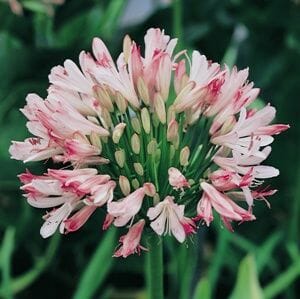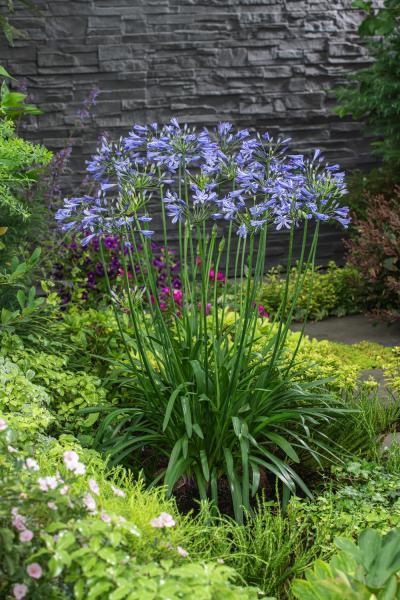Agapanthus Friend Plants: Perfect Pairings for Your Garden
Wiki Article
Releasing the Secret to Effective Agapanthus Farming: Idea for a Flourishing Yard
In the realm of horticulture, cultivating agapanthus successfully needs a strategic technique that encompasses different elements of plant care. By comprehending the subtleties of agapanthus farming, one can develop an atmosphere where these plants grow and grow perfectly.Growing Agapanthus: Finest Practices
When growing Agapanthus, proper dirt preparation is essential for making certain successful development and growth of these stunning blossoms. Agapanthus, commonly referred to as Lily of the Nile or African lily, prospers in well-draining dirt with a somewhat acidic to neutral pH degree - Agapanthus. Prior to planting, it is essential to change heavy clay dirts with raw material such as compost or peat moss to boost drain and provide necessary nutrients for the plantsTo plant Agapanthus, select a location that gets complete sunlight to partial color, as this will certainly promote healthy development and plentiful blooming. Dig an opening twice the diameter of the plant's origin sphere and place the Agapanthus at the same depth it was previously expanding. Carefully backfill the opening with soil, pressing down securely to eliminate any kind of air pockets around the roots.
Water the newly planted Agapanthus completely and continue to keep the soil evenly wet, specifically during the plant's active growing period. Agapanthus. Using a well balanced plant food once a month can additionally sustain the plant's growth and blooming. By adhering to these ideal techniques for planting Agapanthus, you can create a spectacular display of these captivating blossoms in your yard
Suitable Soil Issues for Agapanthus
For optimal development and blooming success of Agapanthus plants, guaranteeing the dirt problems are suitable is important. Agapanthus grows in well-draining soil with a slightly acidic to neutral pH degree varying from 6.0 to 7.0. This kind of soil permits for appropriate water drainage, avoiding waterlogging which can cause root rot. To improve soil drainage, take into consideration including organic issue such as garden compost or peat moss when preparing the growing website. Furthermore, Agapanthus chooses dirt that is abundant in nutrients, so including a balanced plant food throughout the growing season can advertise healthy and balanced growth and lively blossoms.
Watering and Fertilizing Tips
To make sure healthy growth and lively blooms, correct watering and feeding methods are essential for successful Agapanthus growing. Agapanthus plants benefit from routine watering, particularly during the growing season.When it concerns fertilizing Agapanthus, a well balanced fertilizer with equal parts nitrogen, my company phosphorus, and potassium can be used in the springtime to promote healthy growth and blooming. Slow-release plant foods are excellent for giving nutrients slowly over a prolonged duration. Prevent over-fertilizing, as this can lead to extreme vegetation growth at the cost of flowers.
In addition, integrating organic issue like compost into the soil can improve nutrient degrees and improve dirt framework, aiding in the total wellness of the Agapanthus plants. By following these watering and fertilizing ideas, gardeners can guarantee their Agapanthus plants prosper and generate spectacular displays of flowers.
Pruning and Deadheading Strategies
Correct trimming and deadheading methods play a critical function in maintaining the health and aesthetic appeals of Agapanthus plants, matching the vital techniques of watering and feeding for effective farming. Trimming Agapanthus involves getting rid of invested flower heads, dead or yellowing fallen leaves, and overall shaping of the plant to advertise better growth. Deadheading, the process of getting rid of discolored flowers, not only improves the plant's appearance however also encourages further flowering.When deadheading Agapanthus, it is recommended to clip off the blossom stem at the base using sharp, tidy shears. This procedure redirects the plant's power from seed manufacturing back right into root and vegetation development, promoting a healthier and much more durable plant. Routine deadheading can extend the blooming period of Agapanthus and avoid self-seeding, which can result in congestion.
In regards to pruning, Agapanthus typically gain from a light trim after flowering to clean up the plant and motivate fresh development. Cutting back the invested blossom stems and removing any type of damaged or dead foliage helps preserve the plant's vigor and general appearance. Nevertheless, it is vital to prevent cutting into the crown of the plant, as this can weaken its health and wellness.

Protecting Agapanthus From Vermins and Diseases
Applying efficient pest and illness monitoring approaches is critical to guarding the health and vigor of Agapanthus plants in growing. click this Agapanthus are generally hardy plants, but they can still come down with various pests and diseases otherwise correctly looked after. One common pest that affects Agapanthus is the Agapanthus borer, a caterpillar that passages right into the plant, creating damages to the fallen leaves and flowers. To protect against problems, normal evaluation of the plants is important. If borers are spotted, they can be manually removed, or insecticidal soap can be made use of as a control procedure.Along with parasites, Agapanthus are prone to illness such as root rot and fungal fallen leave places. These issues can commonly be protected against by guaranteeing find out here now appropriate drainage and preventing overwatering. If indicators of disease show up, impacted parts of the plant must be quickly gotten rid of to stop further spread. Fungicides may likewise be used as a therapy procedure, adhering to the manufacturer's instructions thoroughly. By staying attentive and dealing with insect and disease problems promptly, gardeners can aid their Agapanthus flourish and flourish.

Conclusion
Finally, successful cultivation of agapanthus requires correct growing strategies, ideal soil problems, appropriate watering and feeding, routine pruning and deadheading, and security from illness and bugs. By following these pointers and tricks, garden enthusiasts can make sure a growing garden loaded with stunning agapanthus flowers. Agapanthus. Bear in mind to preserve regular treatment and interest to detail to promote the health and longevity of these sensational plantsWhen growing Agapanthus, appropriate dirt preparation is necessary for guaranteeing successful growth and advancement of these stunning flowers.Water the freshly planted Agapanthus extensively and proceed to keep the soil uniformly damp, particularly throughout the plant's active expanding season.For optimal development and flowering success of Agapanthus plants, making certain the dirt conditions are ideal is important. When growing or transplanting Agapanthus, make sure the soil is well-prepared to provide the needed foundation for the plants to develop themselves successfully. One common pest that affects Agapanthus is the Agapanthus borer, a caterpillar that passages into the plant, causing damages to the leaves and blossoms.
Report this wiki page